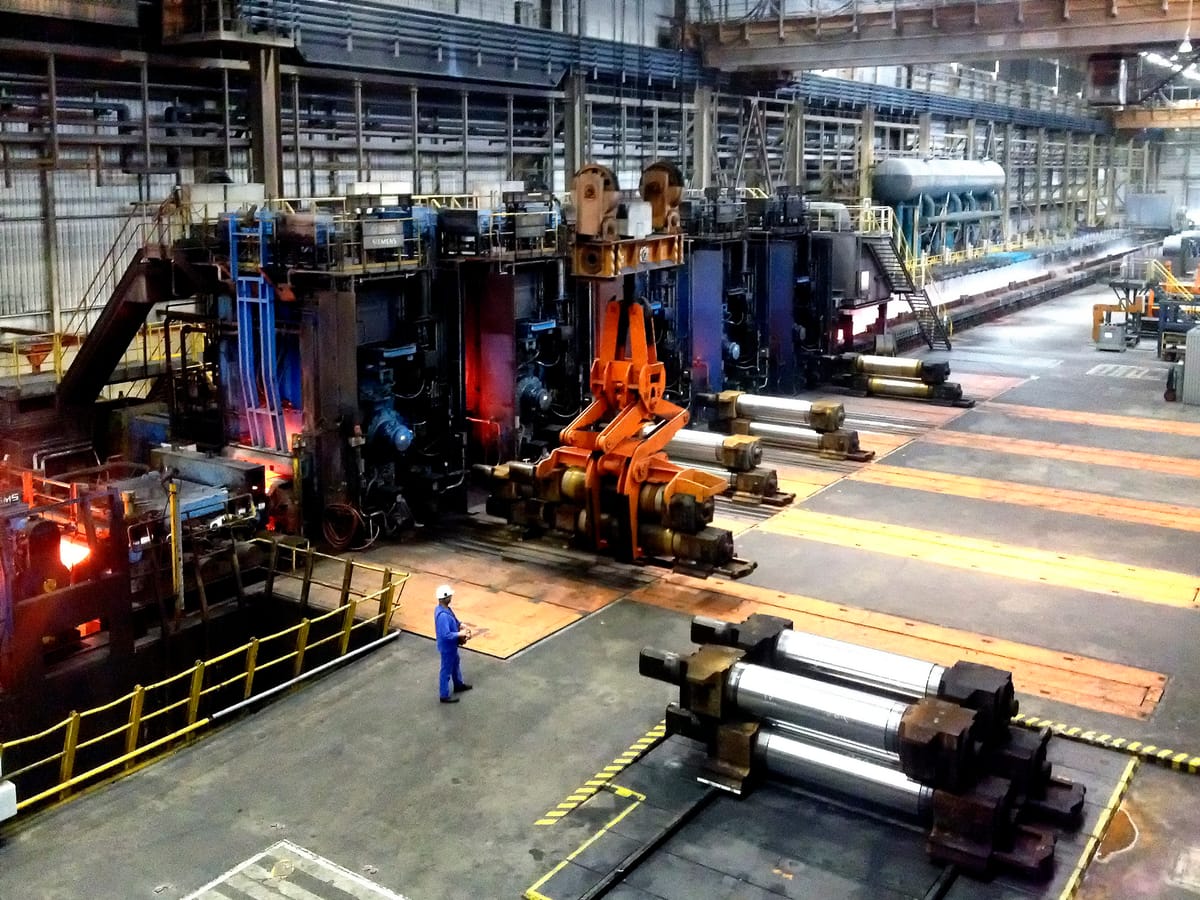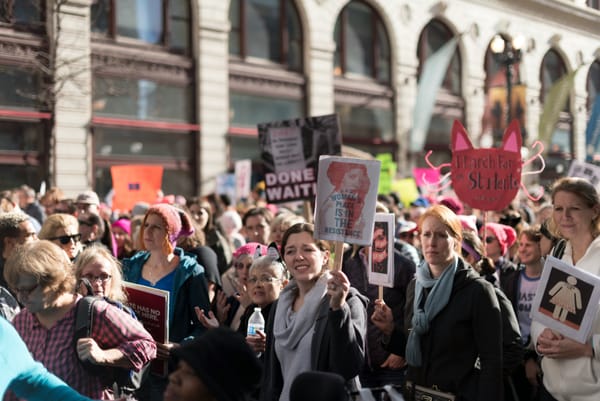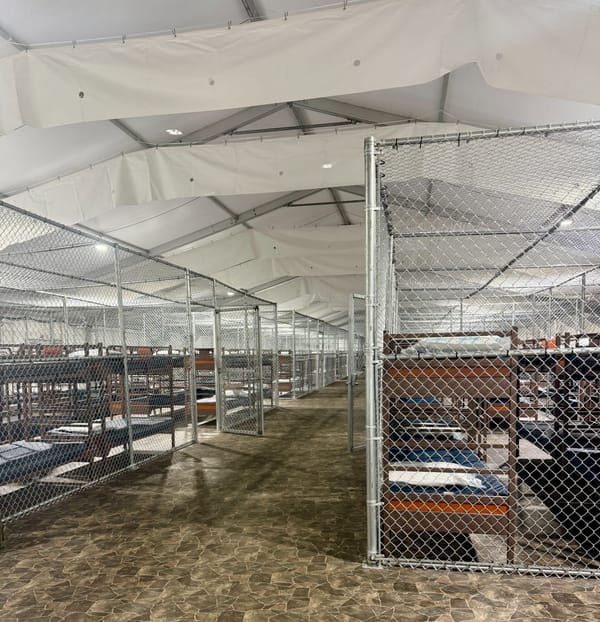Four Questions for the New Industrial Policy
If we want to win the policy battles that are coming, we need to start thinking more clearly about the specifics.

Secular stagnation. Austerity. NAIRU. These were the invocations by which the high priests of economics convinced America that two percent real economic growth was the best that could possibly be achieved. Any attempt to run a hotter economy via Keynesian stimulus was doomed to crowding-out at best and runaway inflation at worst. And in the long shadow of the 1970s, inflation seemed to be the worst of all possible economic outcomes.
Economic events of the last five years have blown this picture apart. The recovery from the severe 2007–2008 recession took a decade. The recovery from the Covid-19 recession took two years, arguably less. The difference was a massive fiscal stimulus that saved the American economy. This led directly to Bidenomics: the massive fiscal stimulus of infrastructure and green energy bills and a "hot" economy with three percent economic growth, low unemployment, and manageable inflation.
Enter abundance liberalism. Enter the new industrial policy. Wonks across the liberal spectrum are waking up to the fact that we as a country have much greater fiscal headway than previously thought. Using this headway is not just an option but a necessity: we've got to spend if we want to maintain this era of high growth and rising real wages. This has led to a tremendous flowering of proposals for what to spend on. Green industry? Absolutely! Good union jobs? For sure! Strategic competition with China? That too! Consumer stimulus? Why not! Fine-tuning specific sectors of the economy? Sounds good!
We are promising the world to everyone, because what matters more than how we spend the money is that we spend the money, and that means breaking the austerity mindset that still grips so many politicians and voters. And breaking that mindset matters. But if we want to win the policy battles that are coming, we need to start thinking more clearly about the specifics. There are four basic questions the new industrial policy must answer if it is to succeed.
Question 1: How much fiscal headway do we have? This question more than any other will determine the scale of what can be hoped for. It will determine when tradeoffs between priorities must start being made. And thus far none of the abundance liberals have attempted to even limn it. By some estimates the Inflation Reduction Act is going to cost $1.2 trillion over ten years, or $120 billion per year. Do we have so much gas left in the tank that we could pass another equivalent package? Or does the scale of our dreams have to be smaller going forward? If so, how much smaller?
Question 2: How variable is this fiscal headway? Keynesianism is not the proposition that governments have unlimited spending capacity. Rather, standard Keynesianism says that stimulus should be countercyclical: high when the economy is in the toilet, trending down as the economy recovers. How much should we expect our fiscal headway to expand and contract, and on what approximate time scale?
Question 3: Can the knowledge problem be solved? How do you tell what industries need investment? How do you tell which industries are going to be essential industries of the next ten or twenty years? You might answer "green technology," and that's true enough. But we should understand climate as unusual here. Climate science has accumulated over decades to form an overwhelming consensus that has been studied in every detail. The needed technologies (batteries and solar panels, for instance) are increasingly well-known—but this was not obvious twenty years ago. Solar power and corn ethanol both were sold as "green investments" in clean energy. It's only in hindsight that ethanol is obviously a boondoggle but polysilicon solar panels the future.
Other countries that have pursued industrial policy have solved the knowledge problem by "imports" or "exports." Very undeveloped countries can simply look to more advanced economies to see the shape of their own future, and then import that shape—"The future is concrete and steel and engines; therefore, we must have concrete and steel and engines." Other countries "export" the problem by focusing their industrial policies on exports: the discipline of the world market tells them what products are valuable.
Both of these solutions are difficult for America. There is no more advanced economy to look to. And because of our immense domestic market and certain other factors, export-led industrial policy has its own difficulties.
Question 4: Can the alignment problem be solved? Historically, one of the biggest long-term problems with industrial policy is regulatory capture. A favored industry gets rich off state subsidies. It uses that wealth to gain political power and influence and lobby for those subsidies to continue—even as that industry becomes unproductive, sclerotic, or simply unimportant to the shape of a changing economy. This was the disease that afflicted the Soviet Union, and arguably afflicts China today: the heavy industries that both built and profited from the first wave of industrialization become too central to the political economy of the state for those subsidies to ever be unwound. Arguably, this is the central driver of American agricultural policy today!
Depending on how you answer questions 1-4, your vision of a future industrial policy will be quite different. Considering the following possible proposals, all floated in one form or another by factions within the broadly liberal coalition.
FedBux. Imagine you think that the size of our fiscal headway is likely to be not just variable but highly variable, fluctuating rapidly as economic head- or tail-winds change. And you also think that both the knowledge problem and the alignment problem are very hard to solve. In that case, you might think the best use of our fiscal headway is simple consumer stimulus. Give every American an account at the Federal Reserve. And when the Fed thinks fiscal stimulus is needed, they simply add money at their discretion to all of those bank accounts. We get a nice hot economy with strong growth and low unemployment, and the free market settles what industries prevail.
Infrastructure grants. Imagine you think that the size of our fiscal headway is variable, but not that variable. And suppose you think the knowledge problem is sort of soluble, but the alignment problem is a serious issue. There are basic infrastructure projects that are fundamental to the whole rest of the economy, but beyond that picking winners and losers is a mug's game at best and an invitation to cronyism and corruption at worst. In that case you might believe that short-term grants or subsidies for specific infrastructure projects—ports, mass transportation, highways, electric generation or transmission, etc.—are the best use of our fiscal headway. But any longer-term entanglement with specific industries is not a good idea.
Targeted industrial policy. Imagine you think that our fiscal headway is only moderately variable, and the knowledge and alignment problems are solvable to a large degree. In that case you might want long-term government investment in specific industries. These might take the form of public housing developers, public electric utilities, or other publicly-owned corporations; it might also take the form of public-private partnerships, creating long-term relationships between government procurement and private entrepreneurship—as, for instance, forms the basis of our military-industrial complex. Regardless of the details, this requires the government to identify and invest in economic sectors critical to the national welfare—whether that's housing, solar, batteries, chips, or something else.
Major government programs. Imagine you think we have a very large fiscal headway, that it's not highly variable, but that the knowledge and alignment problems are in fact quite difficult. In that case you might be drawn to major new government programs in "fundamental" sectors like education or health care. Currently proposed free-college programs would cost between $28 and $75 billion dollars per year. You might prefer supply-side rather than demand-side high education subsidies. The University of California has a yearly budget of approximately $51 billion, though much of that includes tuition and revenue from hospitals and services. "Building new marquee state college systems" is therefore likely to be in a similar tens-of-billions per annum ballpark.
The rediscovery of Keynesianism has exploded the horizon of liberal policy thinking in recent years. We are getting out of our defensive crouch and starting to think big about America's economic future. But there are fundamental questions we have yet to answer satisfactorily. The new industrial policy is tantalizing, not least because insofar as it remains undefined, it allows us to promise everything to everyone. More focused thinking about fiscal limits and political-economic risks is necessary to decide the shape of such policy going forward.
Featured image is Factory floor at a steel mill, by Daniel Foster





